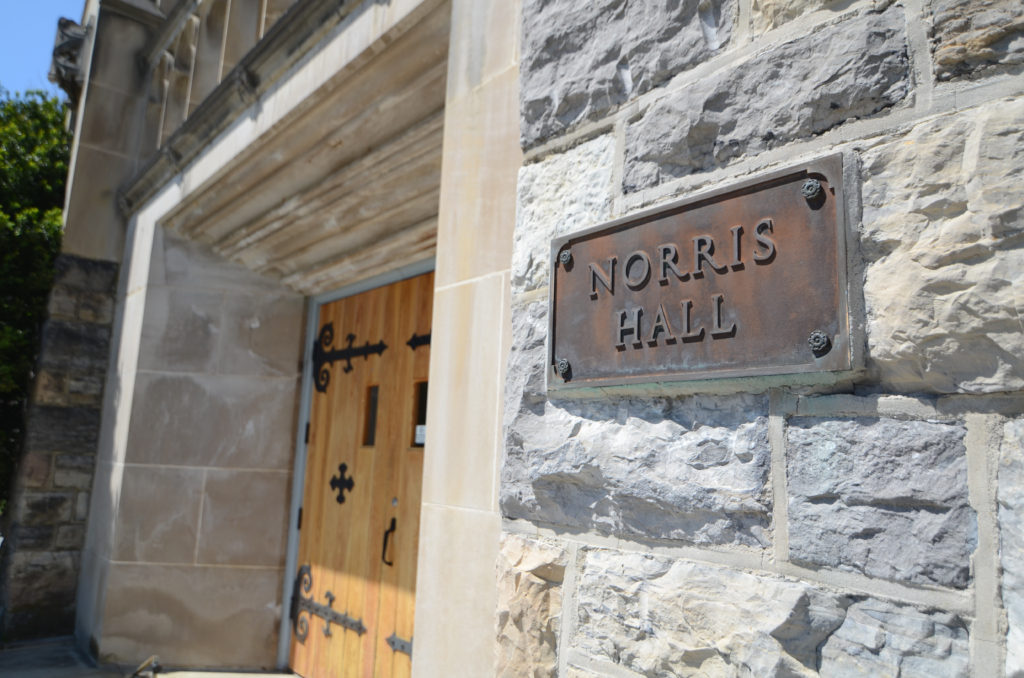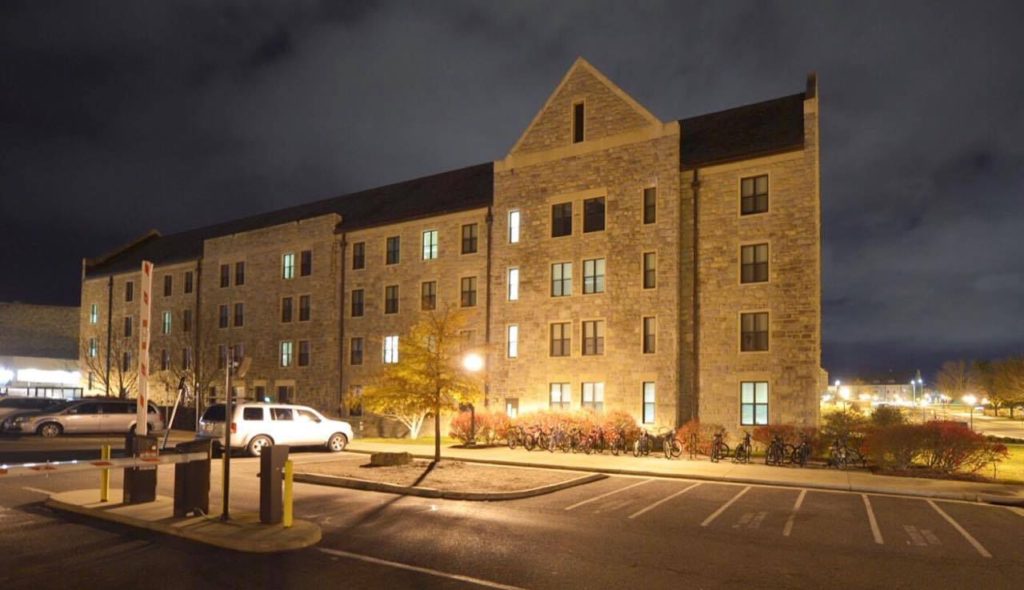Ten years after the fact, the April 16 shootings have become a singular unit in the Virginia Tech ethos. The community commemorates the tragedy as a whole rather than as 32 individual deaths and 23 non-fatal injuries. This piece explores the minute-by-minute breakdown of the incident, commemorating the singular tragedies, heroes, and critical decisions university and emergency officials had to face on April 16, 2007.
Timeline events are taken from the Virginia Tech Review Panel’s 2007 “Mass Shootings at Virginia Tech” report to then-Gov. Tim Kaine.
The last deceased victim is transported to the medical examiner’s office.
The first deceased victim is transported to the medical examiner’s office.
A report of a possible gunshot near Duck Pond proves to be another false alarm.
Charles Steger announces that police are releasing people from buildings and that counseling centers are being established.
A report of shots fired at the tennis courts near Cassell Coliseum proves false.
A fourth email from the Virginia Tech administration warns of “a multiple shooting with multiple victims in Norris Hall,” saying the shooter has been arrested and that police are hunting for a possible second shooter.
All patients from Norris Hall have been transported to a hospital or moved to a minor treatment unit.
A third email from the Virginia Tech administration cancels classes and advises people to stay where they are.
A deceased male student is discovered by police team and suspected to be the gunman: No identification is found on the body. He appears to have a self-inflicted gunshot wound to the head. He is found among his victims in classroom 211, the French class. Two weapons are found near
The 9:42 a.m. request for all EMS units is repeated.
The police clear the second floor of Norris Hall. Two tactical medics attached to the ERTs, one medic from VT Rescue and one from Blacksburg Rescue are allowed to enter to start their initial triage.
Cho shoots himself in the head just as police reach the second floor. Investigators believe that the police shotgun blast alerted Cho to the arrival of the police. Cho’s shooting spree in Norris Hall lasted about 11 minutes. He fired 174 rounds, killed 30 people in Norris Hall plus himself
Using a shotgun, police shoot open the ordinary key lock of a fourth entrance to Norris Hall that goes to a machine shop and that could not be chained. The police hear gunshots as they enter the building. They immediately follow the sounds to the second floor. Triage and rescue
The police inform the administration that there has been another shooting. Virginia Tech President Charles Steger hears sounds like gunshots and sees police running toward Norris Hall. Back in 207 Norris Hall, the German class, two uninjured students and two injured students go to the door and hold it shut
The first 911 call reporting shots fired reaches the VTPD. A message is sent to all county EMS units to staff and respond.
A BPD dispatcher receives a call regarding the shooting in Norris Hall. The dispatcher initially has difficulty understanding the location of the shooting. Once identified as being on campus, the call is transferred to VTPD. (The panel estimated that the shooting began at this time based on the time it
Cho goes across the hall from room 206 and enters room 207, an elementary German class. He shoots instructor Christopher James Bishop and students near the front of the classroom, then starts down the aisle, shooting others. Cho leaves the classroom to go back into the hall. Students in room
A VSP trooper arrives at the traffic stop of Thornhill and helps question him. A gunpowder residue field test is performed on him and the result is negative.
Virginia Tech administration sends an email to campus staff, faculty and students informing them of the dormitory shootings.
A VTPD police captain joins the Virginia Tech Policy Group as police liaison and provides updates as information becomes available.
A Montgomery County deputy sheriff initiates a traffic stop of Hilscher’s boyfriend, Karl Thornhill, off campus in his pickup truck. Detectives are sent to assist with the questioning.
Both police ERTs are positioned at the BPD (next door to campus) in anticipation of executing search warrants or making an arrest.
Classes begin for the second period across campus, including in Norris Hall.
Cho mails a package from the Blacksburg post office to NBC News in New York that contains pictures of himself holding weapons, an 1,800-word rambling diatribe and video clips in which he expresses rage, resentment and a desire to get even with oppressors. He alludes to a coming massacre. Cho
The Policy Group is briefed on the latest events in the ongoing dormitory homicide investigation by the VTPD.
Public schools in Blacksburg lock their outer doors upon hearing of the incident at WAJ from their security chief, who had heard of the incident on police radio.
The Virginia Tech Policy Group meets to plan on how to notify students of the homicides.
A person fitting Cho’s description is seen near the Duck Pond on campus.
Crannis requests BPD ERT to respond for the same reason as the VTPD ERT.
Officers search for Hilscher’s boyfriend. His vehicle is not found in campus parking lots, and officers become more confident that he has left the campus. VTPD and BPD officers are sent to his home; he is not found. A BOLO (be on the lookout) report is issued to BPD and
Flinchum requests the VTPD Emergency Response Team (ERT) to respond to the scene and then to wait at the BPD in the event an arrest is needed or a search warrant is to be executed.
Blacksburg Police Chief Kim Crannis arrives on scene.
Flinchum provides updated information via phone to the Virginia Tech Policy Group regarding progress made in the investigation. He informs them of a possible suspect, who is probably off campus.
Classes begin. Flinchum arrives at WAJ and finds VTPD and BPD detectives on the scene and the investigation underway. A local special agent of the state police has been contacted and is responding to the scene.
Flinchum notifies the Virginia Tech Office of the Executive Vice President of the shootings. This triggers a meeting of the university’s policy group.
A friend of Hilscher’s arrives at WAJ to join her to walk to chemistry class. The friend is questioned by detectives and explains that on Monday mornings, Hilscher’s boyfriend would drop her off and go back to Radford University where he was a student. She tells police that the boyfriend
Additional VTPD officers begin arriving at Hilscher’s room. They secure the crime scene and start a preliminary investigation. Interviews of residents find that they are unable to provide a suspect description. No one on Hilscher’s floor in WAJ saw anyone leave Hilscher’s room after the initial noise was heard.
VT Rescue Squad 3 arrives at Hilscher’s room.
VT Rescue Squad 3 arrives on scene outside WAJ.
Cho accesses his university email account (based on computer records). He erases his files and the account.
The VTPD officer arrives at Hilscher’s dorm room in WAJ, finds two people shot inside the room and immediately requests additional VTPD resources.
The Virginia Tech Police Department receives a call on its administrative telephone line advising that a female student in WAJ had possibly fallen from her loft bed. The caller was given this information by another WAJ resident near Hilscher’s dorm room who heard the noise.
Cho’s access card is swiped at Harper Hall. He goes to his room to change out of his bloody clothes.
Cho shoots Hilscher in her room at WAJ. He also shoots Ryan Christopher Clark, a residential advisor. Clark, it is thought, most likely came to investigate noises in Hilscher’s room, which is next door to his. Both of the victims’ wounds prove to be fatal.
Emily Hilscher enters WAJ after being dropped off by her boyfriend (the time is based on her swipe card record).
One of Cho’s other suitemates notices Cho clad in boxer shorts and a shirt, brushing his teeth and applying acne cream. Cho returns from the bathroom, gets dressed and leaves.








